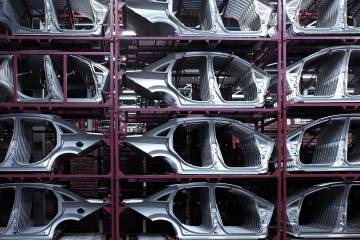 Monday, September 30, 2024
Monday, September 30, 2024  Monday, September 30, 2024
Monday, September 30, 2024 
Time-honored wisdom cautions against reinventing the wheel, but two Johns Hopkins civil and systems engineers are doing just that in their effort to investigate whether new steels recently used in critical car parts—including bumpers and the steel cage that protects drivers in a crash—can be used to create more sustainable and resilient buildings.
With funding from the National Science Foundation and a seed grant from the Hopkins Extreme Materials Institute, Benjamin Schafer, a professor in the Department of Civil and Systems Engineering, and colleague Thomas Gernay, an assistant professor in that department, are analyzing four new, high-performance steels for use as studs and joists in buildings, providing improved fire resistance and ability to withstand loads, as well as reducing the environmental impact.
Developed by the auto industry as part of a strategy to make cars lighter to improve handling and fuel efficiency, these so-called advanced steels are four times stronger than those commonly used in construction today. But they also cost more to manufacture, so figuring out how to use them efficiently in buildings is a priority.
“Some benefits of utilizing these new materials include more efficient material use and lower construction and life-cycle costs,” Schafer said. “These steels also offer the potential for structural engineers and architects to create novel solutions in design and construction.”